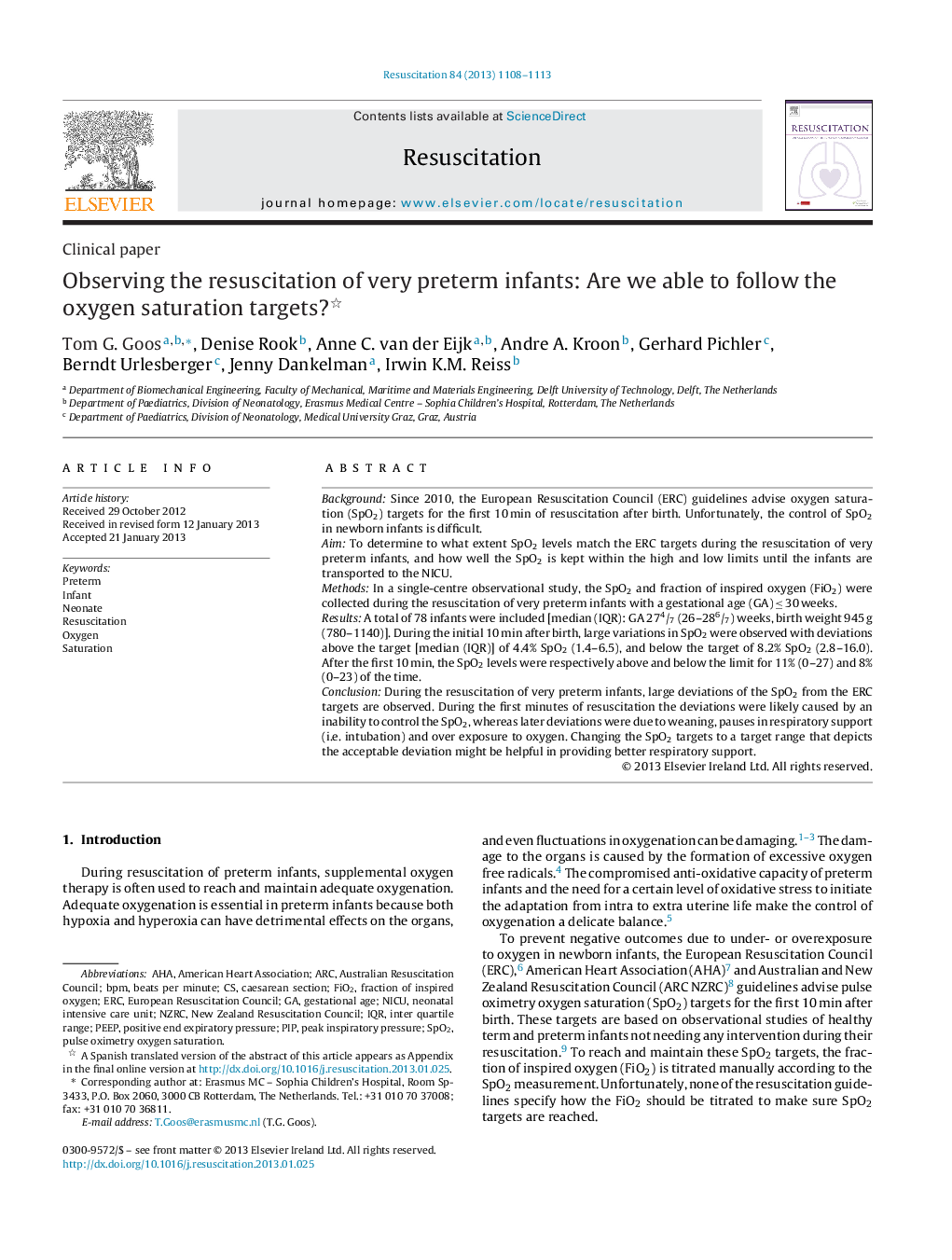| Article ID | Journal | Published Year | Pages | File Type |
|---|---|---|---|---|
| 3008254 | Resuscitation | 2013 | 6 Pages |
BackgroundSince 2010, the European Resuscitation Council (ERC) guidelines advise oxygen saturation (SpO2) targets for the first 10 min of resuscitation after birth. Unfortunately, the control of SpO2 in newborn infants is difficult.AimTo determine to what extent SpO2 levels match the ERC targets during the resuscitation of very preterm infants, and how well the SpO2 is kept within the high and low limits until the infants are transported to the NICU.MethodsIn a single-centre observational study, the SpO2 and fraction of inspired oxygen (FiO2) were collected during the resuscitation of very preterm infants with a gestational age (GA) ≤ 30 weeks.ResultsA total of 78 infants were included [median (IQR): GA 274/7 (26–286/7) weeks, birth weight 945 g (780–1140)]. During the initial 10 min after birth, large variations in SpO2 were observed with deviations above the target [median (IQR)] of 4.4% SpO2 (1.4–6.5), and below the target of 8.2% SpO2 (2.8–16.0). After the first 10 min, the SpO2 levels were respectively above and below the limit for 11% (0–27) and 8% (0–23) of the time.ConclusionDuring the resuscitation of very preterm infants, large deviations of the SpO2 from the ERC targets are observed. During the first minutes of resuscitation the deviations were likely caused by an inability to control the SpO2, whereas later deviations were due to weaning, pauses in respiratory support (i.e. intubation) and over exposure to oxygen. Changing the SpO2 targets to a target range that depicts the acceptable deviation might be helpful in providing better respiratory support.
